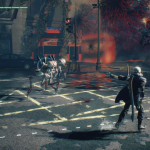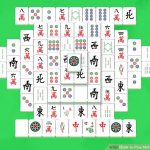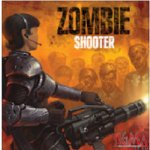Devil May Cry 5 Review – From Zero To Nero. As you send demons flying across the screen in Devil May Cry 5, a strong sense of familiarity will hit you. This is “old school” Devil May Cry, a simplistic network of hallways and arenas where you humiliate demons with absurd weaponry as a thumping battle theme fuels the bliss of every well-executed combo. DMC5 marks a return to the previous series continuity, and everything you remember about how those games played has been resurrected and improved. It is a brilliant iteration of the series’ best qualities–but it innovates as much as it reiterates, balancing new and old with infectious confidence.
The majority of your time in DMC5 is spent killing demons. With an array of melee and projectile attacks, you inflict complex combo strings while performing split-second dodges to evade incoming attacks. An in-game ranking system continually judges your style, encouraging you to better your performance. Protagonists Nero, Dante, and newcomer V each offer their own unique playstyles that makes the simple objective of clearing rooms of enemies continually exhilarating. Combat is where the game most expresses itself, showcasing the nuances of its mechanical depth in a variety of creative ways.
Nero is where new and old ideas come together. Replacing his lone Devil Bringer from DMC4 are new prosthetic arms called Devil Breakers. With them, you can pull enemies towards you, as well as tap into an assortment of special abilities depending on which Devil Breaker model you have equipped. For example, Overture can deliver a wide shock attack, while Punch Line shoots a rocket-powered fist that continuously damages enemies. Devil Breakers significantly evolve Nero’s playstyle by expanding his attacks, but what’s most curious is how switching between them requires you to discard your current one in order to equip the next down the line. At first, this seems like an arbitrary way to access each arm’s unique abilities–not to mention there’s little done to justify this rule in-game other than asserting that they’re simply “fragile.”

However, this limitation introduces a thrilling spontaneity to combat that encourages you to be industrious and adaptable. You’re initially compelled to be frugal with Devil Breakers, but as you expand the number you can carry, you start hitting a rhythm expending them with strategic grace, flowing from one stylish combo to the next. But even with the best reflexes, an enemy can shatter a Devil Breaker mid-combo, which forces you to adjust your strategy on the fly. A persistent tension underlies using Nero’s Devil Breakers, melding high-consequence tactics with impulsive creativity. The gratifying free-flowing strategies that Devil Breakers inspire makes it easy to overlook any initial frustrations. They present a brilliant dichotomy that strengthens and amplifies the idiosyncrasies of Nero’s more accessible playstyle.
Where Nero brings new flair to classic mechanics, V is fresh and unexpected. Unlike his sword-touting brethren, V damages enemies from afar with his two familiars: a shape-shifting panther named Shadow and a demonic bird named Griffon (DMC1 fans should instantly recognize these creatures). The former inflicts melee attacks, while the latter shoots projectiles. Each have their own regenerating health bar and can be taken out of combat temporarily if you’re not careful. V also has a third familiar named Nightmare. This giant golem acts as more as a Devil Trigger-like last resort who can inflict ridiculous damage all on his own for a short duration. In addition, it can be commandeered to inflict more direct assaults on enemies. An enemy cannot be killed by a familiar’s attacks alone, though; V himself must inflict the final blow. V requires a patience that goes against your general instinct to be confrontational. As a result, his more deliberate pace can be occasionally irritating, especially when your familiars have trouble focusing on the proper target during a hectic fight. It’s a bit disorienting due to the lack of feedback from hitting enemies with your familiars.
Despite this, V’s emphasis on space management and calculated movement is a fantastic change of pace. Cunningly avoiding attacks as you command your familiars to deliver complex juggles is a satisfying thrill. And it’s made all the more rewarding by the impact of a final blow alongside V’s brief poetic soliloquies. V demands restraint, a quality that defies the offensive strategies of previous characters. His abilities may not seem like much, but he reframes the way DMC is played, demonstrating that there’s still room for original and refreshing ideas in combat. V’s inventive playstyle is a superb addition that feels right at home alongside Nero and Dante.
=> Play games free on 123games now.





